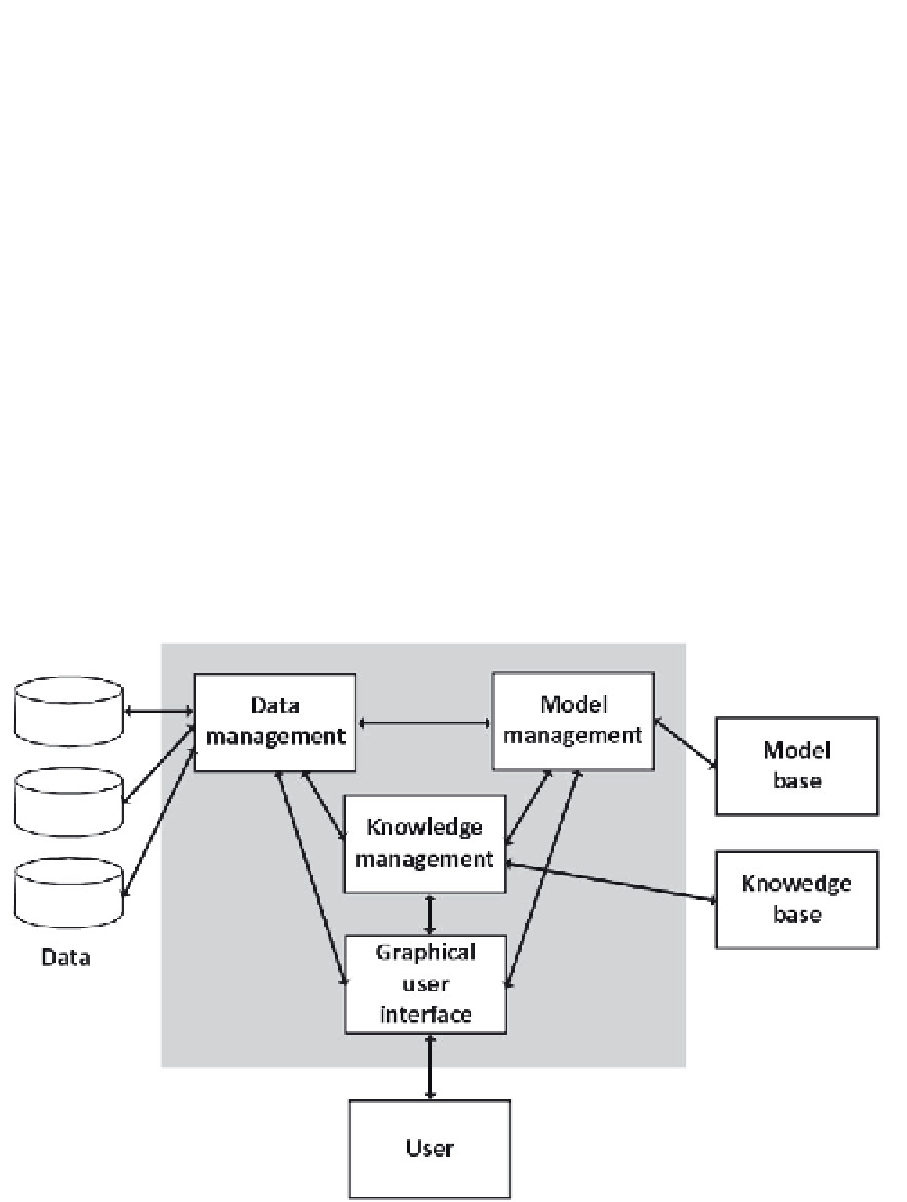Information Technology Reference
In-Depth Information
requirement for quick adjusting and implementing of the system functions. These
requirements lead to selecting Rapid Prototyping as the development approach.
5.1 Design, architecture, and development possibilities
The common structure of DSS consists of four components - data management subsystem,
model management subsystem, knowledge management subsystem, and user interface
subsystem. The data management subsystem includes database and database management
system (DBMS). It is usually connected to the data repository, such as data warehouse. The
model management subsystem is software that includes quantitative models with analytical
capabilities, and an appropriate software management. It can also include modeling
languages for building custom models, and can be connected to the model storage. The
knowledge management subsystem provides intelligence to facilitate the decision-making
process. This subsystem is optional, but highly recommended. The user interface subsystem
mediates communication between the users and the system. A Schematic view of the
common DSS structure is shown in Figure 6.
According to requirements and based on the common structure of DSS, the architecture of
proposed DS for laboratory research was designed. Architecture of proposed DSS consists of
four interconnected components - database server, application server, web server, and
graphical user interface (GUI). Some of these components include additional functional
units. The architecture of proposed DSS is shown in Figure 7. Functions of single
components and their roles are described below.
Fig. 6. A schematic view of DSS

Search WWH ::

Custom Search